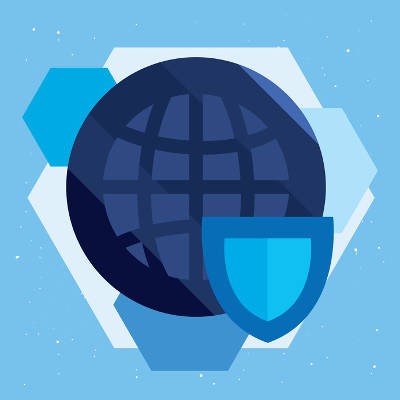Cybersecurity is one of the most talked about problems facing the modern business. This is because cybercrime has increased precipitously while businesses have moved more of their processes onto the computer. Planning how to protect your business’ crucial digital resources from corruption and theft has never been more important. We’ll take a look at some of the problems we are seeing that are negatively affecting small and medium-sized businesses' ability to do business effectively.
Before we go into detail about what network security tools your organization should be using, we should say that the whole point of doing all of this is to protect your organization’s investments. You’ve paid for the services, hardware, software, and the time that it has taken to create and store the data, so it only makes sense that you should make the effort necessary to protect it. By protecting your data, you are protecting your staff, your customers, your vendors, and your business. You wouldn’t just leave a bag of money in plain sight inside the front door of your business unless it was locked and you could ensure that no one was coming through it, would you? The same precautions should be taken for your digital assets that, make no mistake about it, are being targeted.
Protecting Business Computing
A business’ computing infrastructure is larger and supports many more services than it ever has in the past. For this reason, we have to start outside the network itself. Cloud services are a big part of today’s business. When they are hosted outside of your network, they are managed by a third-party and one would think they have their own security team handling cybersecurity. Obviously, this can’t be guaranteed, but one would think that if a company is selling processing, applications, or storage over the Internet that their business model depends on their systems remaining secure.
For the end-user to access these systems there is a dedicated access control program attached. Many times organizations will require users to set up two-factor authentication to get the most out of the access control system that accompanies the cloud solution. In the cloud, many different types of software, hardware, and other services are available.
As we get into the outer layers of the network, the first place where a company has secure is called the perimeter of the network. The best way to do this is by deploying a firewall. A properly deployed and maintained firewall will go a long way toward keeping unwanted visitors off of your network.
But in today’s state of things, having only a firewall in place isn’t going to cut it.
Going the Extra Mile
There is now security solutions called Intrusion Prevention Systems (IPS) or Intrusion Detection Systems (IDS). While these solutions aren’t mutually exclusive, and IDS’ job is to tell administrators that there has been a security breach, while an IPS is designed to keep these threats out by attempting to block suspicious activity. An IPS also logs all network traffic, an often substantial undertaking, to ensure that administrators can review, and try to isolate any potentially unwanted action or file that enters the network.
Years ago, this would have been enough to keep most threats out. Today, it’s just the beginning. If you think of a computing network like an onion, every “layer” of the network will get its own access control system and its own firewall. This way each part of a computing network, from the perimeter, to the applications, to the databases where all the data is held are all protected by a different source of encryption. By setting up a tiered access control system that requires authentication in multiple places, it makes it harder for unauthorized access. It also protects your business against one of the biggest threats that it faces each day: phishing attacks.
A phishing attack is one where an outside entity tries to pass off correspondence as legitimate, when it is, in fact, fraudulent. According to Verizon, 90 percent of all network attacks are the result of successful phishing attacks; and, there is only one thing that can keep phishing attacks from being a major problem for your business: Training.
Training Your Staff
Getting your staff trained about phishing may not seem like a priority. After all, you know how long and how much expense it was to get them up-to-speed in the first place, training them about network security could be seen as being out of their purview.
Nothing could be further from the truth.
You have to face that since encryption and cybersecurity solutions are so good, that taking them on directly takes far more time and resources then going after your staff does. Through your employees is the only way in for many of these modern hackers, and rest assured they are going to use your staff as the vessel to get where they want to go...unless you stop them.
Training your staff about phishing and other manners of social engineering is the best way to keep unwanted people out of your network. Think about it, no firewall is going to help you if they access your network with legitimate credentials. Keeping credentials secure and requiring authentication can go a long way toward saving your business from dealing with data breaches, malware, and any other type of hacker-induced network security problem.
If you would like help finding the right cybersecurity strategy for your business’ needs consider the IT professionals at Grove Networks a good solution. Call us today at (305) 448-6126 to learn more.

